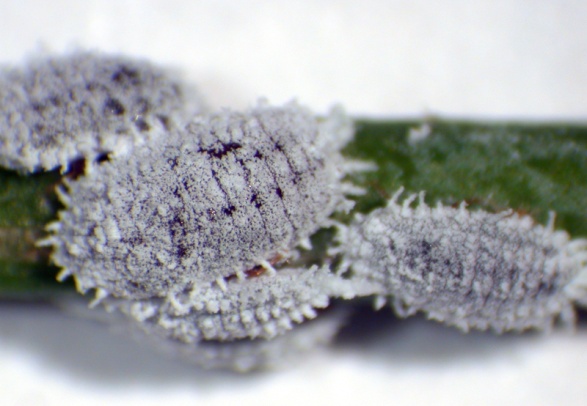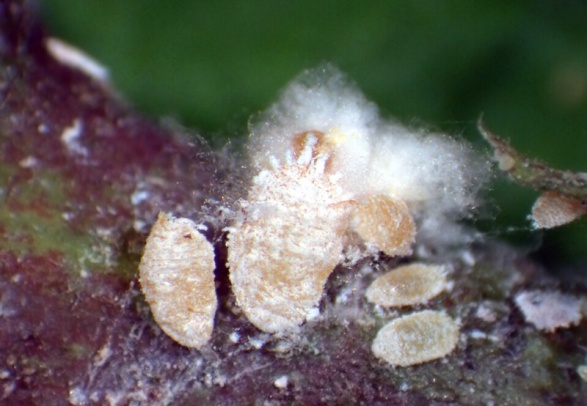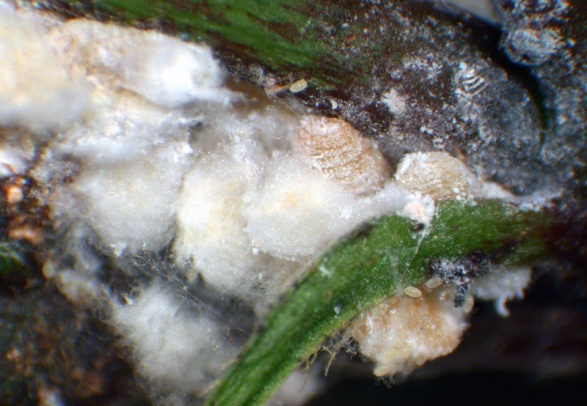
Papaya mealybug
Paracoccus marginatus Williams and Granara de Willink
(Insecta: Hemiptera: Pseudococcidae)
Papaya mealybug can be spotted as cotton-like masses on plant foliage, stems and fruits. Females are yellow and covered in wax. They are 2.2 mm long, oval, and wingless. Males have wings and elongated bodies that are pink and 1 mm in length. Eggs are greenish yellow, and hatching nymphs are yellow.
Completion of the life cycle takes approximately one month. Adult females lay several hundred eggs in an egg sac. Female nymphs complete three instars whereas male nymphs complete four instars before emerging as adults. Males spend the fourth instar inside a cocoon.
Papaya mealybug is native to Mexico and/or Central America, has invaded the Caribbean region in the early 1990s, and was detected in Florida in 1998.
Papaya mealybug is polyphagous, that is, feeding on many different host species. It attacks several tropical fruits, vegetables and ornamentals by inserting its piercing sucking mouthparts in the fruits, leaves and stems of host plants. During feeding, it injects saliva into the plant host, causing chlorosis, stunting, leaf deformation, and even death. Papaya mealybug also produces honey dew which promotes growth of sooty mold that can impair plant photosynthesis.
Images
To save the Web-optimized images shown below to your hard drive:
PC users: right click to "Save Picture (or Image) As..."
Mac users: click and drag to your desktop.

Papaya mealybug, Paracoccus marginatus Williams and Granara de Willink, covered in waxy secretions
(Photographer: Lyle Buss, University of Florida)

Different life stages of papaya mealybug, Paracoccus marginatus Williams and Granara de Willink
(Photographer: Lyle Buss, University of Florida)

Infestation by papaya mealybug, Paracoccus marginatus Williams and Granara de Willink
(Photographer: Lyle Buss, University of Florida)